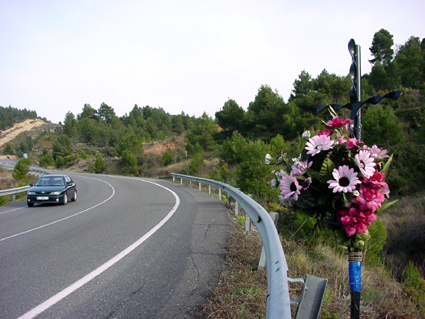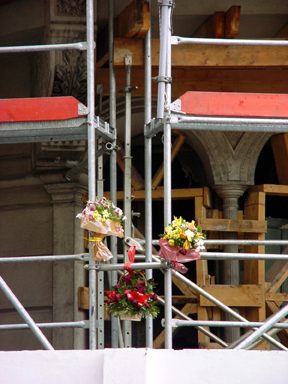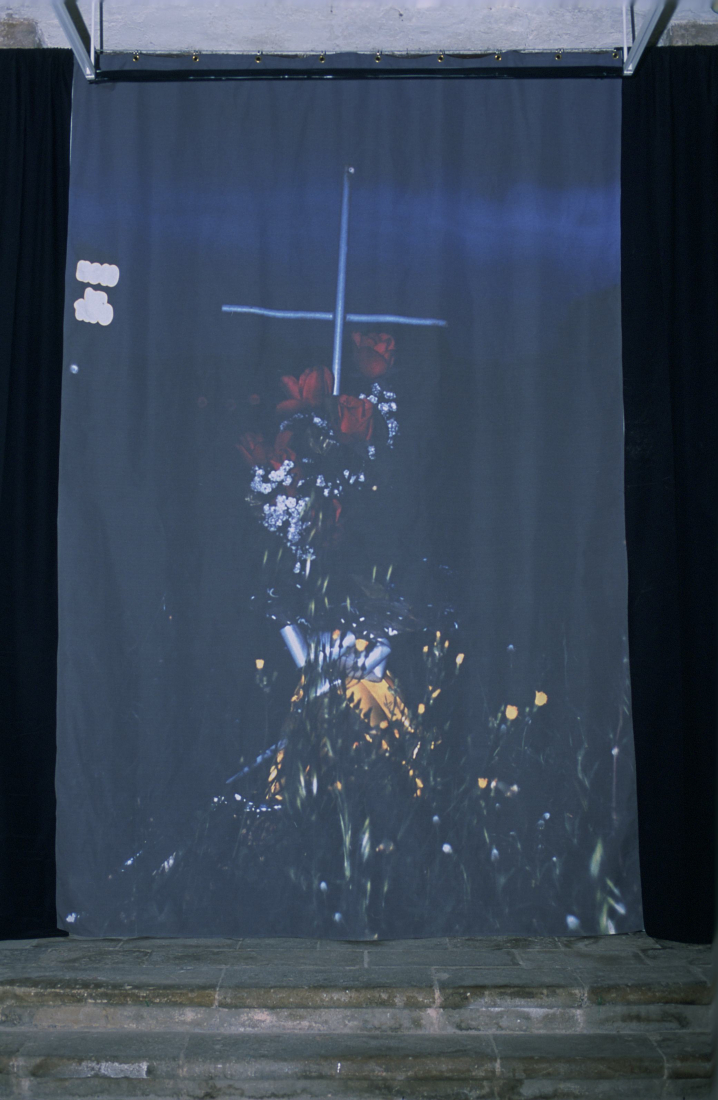Fatum
The images and their relationships
This exhibition is based on the compilation of images, through photographic techniques, of flowers and commemorative elements located in points on the road network where there have been fatal accidents. The work locates and relates the images within the social, anthropological, symbolic, and in different historical and archaeological contexts.
"More than the lack of visibility, poor state of road maintenance or lack of concentration, which explains that someone losing their lives in a traffic accident is ... that this is a mortal being!"
The fact of death: acceptance and aesthetic justification
More than the lack of visibility, the poor state of road maintenance or the lack of concentration, which explains that someone losing their lives in a traffic accident is ... that this is a mortal being!
But, of course, it is fearful to assume that the mortal condition is intrinsic to the human being - who has defined life as a hereditary, chronic and mortal illness - and prefers to present it as something external and accidental. However, there are many other ways of avoiding the fact of death, including that curious that consists of making a leak forward, celebrating death as an indispensable background so that it can excel and shine the phenomenon of life (Goethe said that the only way to neutralize what overflows us is to love it).
It would be a matter of accepting the fact of death with a serene attitude, as a bad thing that should not prevent us from enjoying the good things of life. That is, neither celebrate nor deny its presence. A denial that, in order to be more effective, is usually disguised as an affirmation, changing the sense of death according to convenience (or, in other words, by simply giving it a meaning). In this way, death will only be accepted as a transit to another life, as proof of the existence of a personal destiny written in a hidden text, or as an accident, as we mentioned at the beginning.
Lately, in addition, it seems that grounding is what we could call the aesthetic justification of death. In a time of radical individualism, where what separates us from others rather than what unites us, the meaning of something (including death) always depends on the ability to excite sensitivity (individual). As if, for example, death was justified as a reason to create an impressive advertising campaign by the Directorate General of Traffic.
Pere Saborit
Sound credits
Track: Trained to kill
Disc: Music For The Hashishins (in memoriam of hassan sabbah)
Author: Vagina Dentata Organ LP (WSNS, London, 1983)
Presence in Schilling cafe-bar
In parallel to the presence of the exhibition in the Sala Petita of La Capella, you can also see an extension in the windows of the Schilling café-bar at Carrer Ferran 23.






